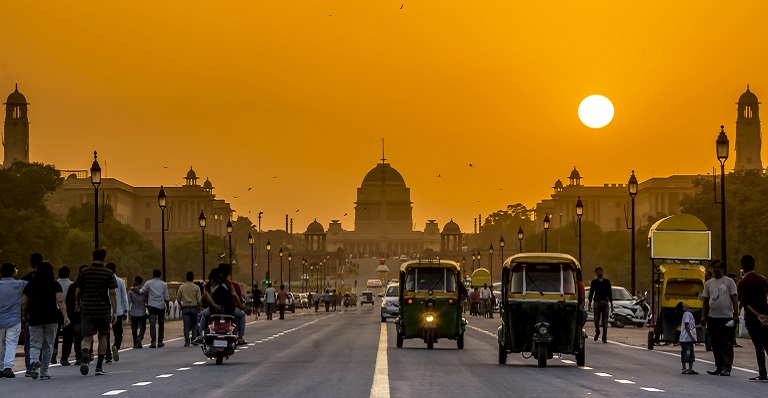Innovation is the process of coming up with ideas that creates value for your customers. As the world becomes increasingly competitive, corporate innovation is crucial not only for a company to grow, but also to sustain itself as it allows companies to adopt new technologies, and keep up with the changes in the market.
So as an employee, how can you innovate within your company? Let’s take a look at Canva and what you learn from it.

(Image)
Canva is an Australian-based collaborative platform startup designed to help people who aren’t graphic designers to create social media graphics, presentations, posters and more. The user growth of Canva has hit over 10 million users within 5 years, and it has recently closed a $60 million funding round, bringing its valuation to $6 billion.
Canva has managed to carve out a new market of users for itself, even when Adobe has dominated the design industry for years. So how did Canva innovate to become so successful, and what can you do to adopt the learnings and innovate within the company?
-
Increase the value of your company’s social currency.

Let’s first understand what social currency is. It is the amount of influence that your users have on others as they share about your company. When consumers choose to share information, a person “spends” social currency and places their reputation on the line”.
Social currency has enabled Canva to achieve high user growth over the years, and the good news is that it is not something exclusive to Canva alone. Large companies can make use of social currency to increase and grow its users too. It’s important for employees to understand that they all have a part to play in increasing the value of social currency for the company.
For example, if you are a front-line service staff within a company, being friendly and exuding warmth to users can increase affiliation, which is the sense of community among your customers, and thereby improving the value of your company’s social currency. And even if you are holding higher level management roles within the company, you can still innovate as there are other dimensions of social currency that can be more relevant to your role.
To harness the value of social currency within your company, you should first learn to understand what social currency is, figure out which dimensions are applicable to your role, and then find different ways to add value within your means. No matter what role you hold within your company, there will be different ways within your scope of work in which you can add value to the company’s social currency.
-
Iterate but do it wisely.

The iteration process is something that should be familiar to both startups or large companies. With iteration processes, companies strive to improve existing products and services to meet the changing needs of their consumers.
Simplicity and Integration. These were the two things that caught my attention when I was analysing the way Canva built its product.
Integrating features is something all huge corporates always do. Adding new features, new designs, new upgrades to their product portfolio…and the list goes on. Companies are always rushing to build everything that consumers ask for, or throw a variety of products (or options) in their faces for them to do so. But is it always necessary?
Iterating without a clear purpose and stuffing too many features into a product may result in feature fatigue and cause your users to disengage and stop using your product instead. As a result, iteration resulted in more harm than good for your company. For example, If you are a product manager in the company, you should consider “offering a wider assortment of simpler products instead of all-purpose, feature-rich products”.
This point also emphasises why integration worked well for Canva because while they integrate different processes together, they also ensure that there is the element of simplicity. In an increasingly complex world, consumers are overloaded with information and spoiled with choice. Companies should make their consumer’s lives easier instead of making it confusing and harder for them to make decisions and complicating their way of life.
Whether you are on the management level or a regular employee within your company, if you do see that your company is innovating in a way that is making the user’s life harder, it’s best to sound out and feedback on the problems in any way that you can, so that your company can seek improvements and iteration in the right direction.
-
Don’t be too focused on the competition.

Canva didn’t set its direction by focusing on trying to defeat Adobe or trying to disrupt the industry. They decided on a future that they wanted to see – one that focused on solving a specific problem, and they set off to achieve it.
For large companies, they would have found the solution to the problem a long time ago, which was how they get to grow and scale in the first place. But as they grow larger and more competitors come into the market, bigger companies start to be “at war” with each other and sometimes, they lose sight of the problem they wish to solve in the first place.
There are many large companies that have always been at war with each other. Famous examples include Apple Vs Samsung and Snapchat Vs Instagram. Even recently, Apple’s new iOS 14 sparked a debate as many commented that its new interface layout is similar to that of Samsung phones.
At times, large companies may lose sight of their company’s mission and as they are too focused and too tied up with their competitors movements. It is not a must to be able to provide the same functionalities and features as your competitors – unless extensive research and experimentation prove otherwise.
A recent example would be the shutting down of Lasso, Facebook’s version of “Tik Tok” that was launched back in 2018 in a bid to become more competitive in the social media industry. It is quite apparent that Facebook is trying ways and means to fight this new competitor, and without much success.
The main takeaway here is to always remember to focus on the end-user and not the competitors. It’s okay to take a look and see what your competitors are doing but don’t be too focused on what they are doing and forget what you originally set out to achieve. As you go about your roles within the company, use competitors as a reference point to improve but never as an idea generator. Focus on your own users, own problems and iterate accordingly.
-
Enhance the emotional value from your product or service.

(Quote I Image Credit)
Feeling confident, proud and accomplished. These were emotions that Canva users felt while using the platform and these emotions were real – not just marketing tools used by Canva to advertise themselves. Canva enabled users realise these emotions by creating a platform that is easy to use, made users comfortable in playing around with the features, and they made sure that the users can achieve the results that they want. All of these sparked positive emotions throughout the user journey.
Another point is that Canva doesn’t use emotional appeal actively as part of their marketing campaigns but rather, to showcase these emotions through storytelling during interviews such that it becomes more credible and trustworthy. They also understood that the users will naturally feel these emotions on their own, so there was no real need to use emotional marketing on their end.
On the other hand, large corporates love to use the emotional play on marketing. A well-known example is Coca-Cola, where they portray the feeling of happiness in their campaigns. One of their iconic campaigns that you may be familiar with is the ‘Open Happiness’ campaign, launched back in 2009. But as companies forcefully shove the emotional appeal into the face of consumers over and over again, the overuse of emotional appeal may actually harm your credibility instead.
Rodolfo Echeverria, the Global Vice President, Creative at The Coca-Cola Company, mentioned that “emotion had pervaded popular culture and advertising” and Coca-Cola eventually ditched their ‘Open Happiness’ campaign in place for ‘Taste the Feeling’ which reduces the focus on the emotional appeal in 2016.
As you innovate within the company, it is good to think about how you can enhance the emotional aspect of the company’s product or service without blatantly shoving the emotional appeal to your audience. A good way to do so is by enhancing the positive emotions and eliminating the negative emotions during their user journey. To figure out what emotions are triggered at the different stages of a user’s journey, you can use different methods to do so such as by conducting user testing, research and feedback channels, face-to-face communication, and so on. Figure out what is the best way to understand the user journey, and what you can do about it within your means to enhance emotional value for the users.
Also, large companies tend to spend lots of money to hire third party agencies to conduct user research to find out about their sentiments and they do not come up with actionables that solve their user’s problems afterwards. Companies should learn to make use of the results, listen to the user’s comments and come up with targeted solutions to the problems that surface as these data carry the emotional value that your product has on its users.
—
If you would have to take away just one lesson from this entire article, you should remember to always put the users first. By focusing on your users, you will be able to increase the value of social currency, iterate wisely, not get side-tracked by the competition, and enhance emotional value. And that way, you can innovate in the right direction. Also, it may be challenging to act on every single lesson so do adapt and adjust these pointers according to your company’s needs. It’s time to use your efforts innovating and creating something that creates positive impact and growth.
As I end off, I hope that you will now be able to improve and innovate better within your company!








